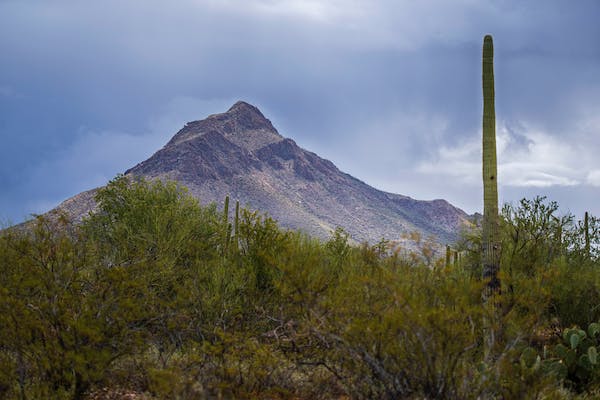You will be as small as an ant if you found yourself under the giant trees in Sequoia National Park. It is also called Land of the Giants as this magnificent landscape testifies to nature’s size, beauty, and diversity—huge mountains, rugged foothills, deep canyons, vast caverns, and the world’s most giant trees. The park is in the southern Sierra Nevada east of the San Joaquin Valley, where the weather can vary a lot by season and elevation, ranging from 1,370′ to 14,494′.
To protect 404,064 acres (631 sq mi; 163,519 ha; 1,635 km2) of forested mountainous terrain, was the park established on September 25, 1890. The park encompasses a vertical relief of approximately 13,000 feet (4,000 m) and has the highest point in the contiguous United States, Mount Whitney, at 14,505 feet (4,421 m) above sea level. It is also adjacent and south of Kings Canyon National Parks. In 1976, it was designated as Sequoia-Kings Canyon Biosphere Reserve.
What made this park unique among others are the giant species of trees like sequoia trees, General Sherman Tree, the giant tree globally. The General’s Highway connects the Giant Forest to Kings Canyon National Park’s General Grant Grove. The giant sequoia forests are within the 202, 430 acres of old-growth forests shared by Sequoia and Kings Canyon National Parks. The parks preserve a landscape that still looks like the southern Sierra Nevada before Euro-American settlement.
Visitors of Sequoia National Park pass through the southern entrance near the town of Three Rivers at Ash Mountain at 1,700 ft (520 m) elevation. The lower elevations house the only National Park Service-protected California Foothills ecosystem, consisting of blue oak woodlands, foothills chaparral, grasslands, yucca plants, and steep, mild river valleys. Abundant wildlife can also be found in this region. Commonly found on the areas are foxes, bobcats, deer, mules, rattlesnakes, and more rarely, reclusive mountain lions and the Pacific fisher are seen. It is believed that the last California grizzly was killed in this park in 1922.
The landscape becomes a montane forest-dominated coniferous belt at higher elevations between 5,500 and 9,000 feet (1,700 and 2,700 m). Ponderosa, Jeffrey, sugar, and lodgepole pine trees, abundant white, red fir, and the giant sequoia trees, the most massive living single-stem trees on earth are found in this area.
The area where Sequoia National Park is situated was first home to “Monache” (Western Mono) Native Americans. They mainly resided in the Kaweah River drainage in the park’s Foothills region, though evidence of seasonal habitation exists as high as the Giant Forest.
During summertime, these Native Americans would travel over the high mountain passes to trade with tribes to the East. Today, pictographs are found at several sites within the park, notably at Hospital Rock and Potwisha, also seen are bedrock mortars used to process acorns, which was a staple food for the Monache people.
During the European settlers’ first arrival in the area, smallpox had already spread to the region, annihilating Native American populations. Hake Tarp was the first among the European settlers to build a home from a hollowed-out fallen giant sequoia log in the Giant Forest next to Log Meadow. Tharp respected and preserved the beauty of the forest despite him allowing his cattle to graze the meadow.
Tharp’s attempt to conserve the giant sequoias had initially met limited success as the white settlers seeking to create a utopian society founded the Kaweah colony, which sought economic success in trading Sequoia timber. However, Giant Sequoia trees were later found out to crack easily, making it not suited to timber harvesting, yet thousands of trees were already logged before logging operations ceased.
The Giant Forest was incorporated into Sequoia National Park in 1890 by the National Park Service. It is also the same year of the park’s founding and the same year when all logging operations ceased. Over the decades, the park has expanded several times. One expansion occurred in 1978, an attempt by the Walt Disney Corporation to purchase a high-alpine former mining site south of the park for a ski resort. The site, annexed to the site, is known as Mineral King.
There are more than a million visitors to Sequoia National park every year. You can drive through the Park to see the majestic and magnificent trees and experience unforgettable sights.
Activities visitors to the Land of the Giants can enjoy include:
Tunnel Log
In Sequoian Park, the tree that measures 275 feet (84 m) tall and 21 feet (6.4 m) in diameter fell across a park road in 1937 due to natural causes, but the Park’s crew provide a passage by cutting an 8-foot (2.4 m) tall, 17-foot (5.2 m) through the trunk, making the road passable again.
Kings Canyon Scenic Byway
If you want to visit King Canyon, you need to pass this Kings Canyon Scenic Byway, also known as Highway 180, a 50-mile route by car, full of twists and turns that take visitors to one of the deepest canyons in North America.
The route starts in the foothills outside of Fresno, California, enters the Grant Grove area of Kings Canyon National Park, then descends through the Sequoia National Forest, finally ending at the Cedar Grove area of Kings Canyon National Park.
Highlights of the tour include hiking to the General Grant Tree, touring Boyden Cave as long as the weather is beautiful, and visiting the gorgeous Grizzly Falls. Visitors find it breathtaking and beautiful, but extra caution is needed due to the routes many curves.
Moro Rock
There is a granite dome at the head of Moro Creek in the center of the park between Giant Forest and Crescent Meadow. The Civilian Conservation Corps built-in 1930 this 400-step stairway cut into and poured onto the rock so that visitors can hike to the top. The stairway is on the National Register of Historic Places list. The view from the rock covers much of the Park, including the Great Western Divide.

